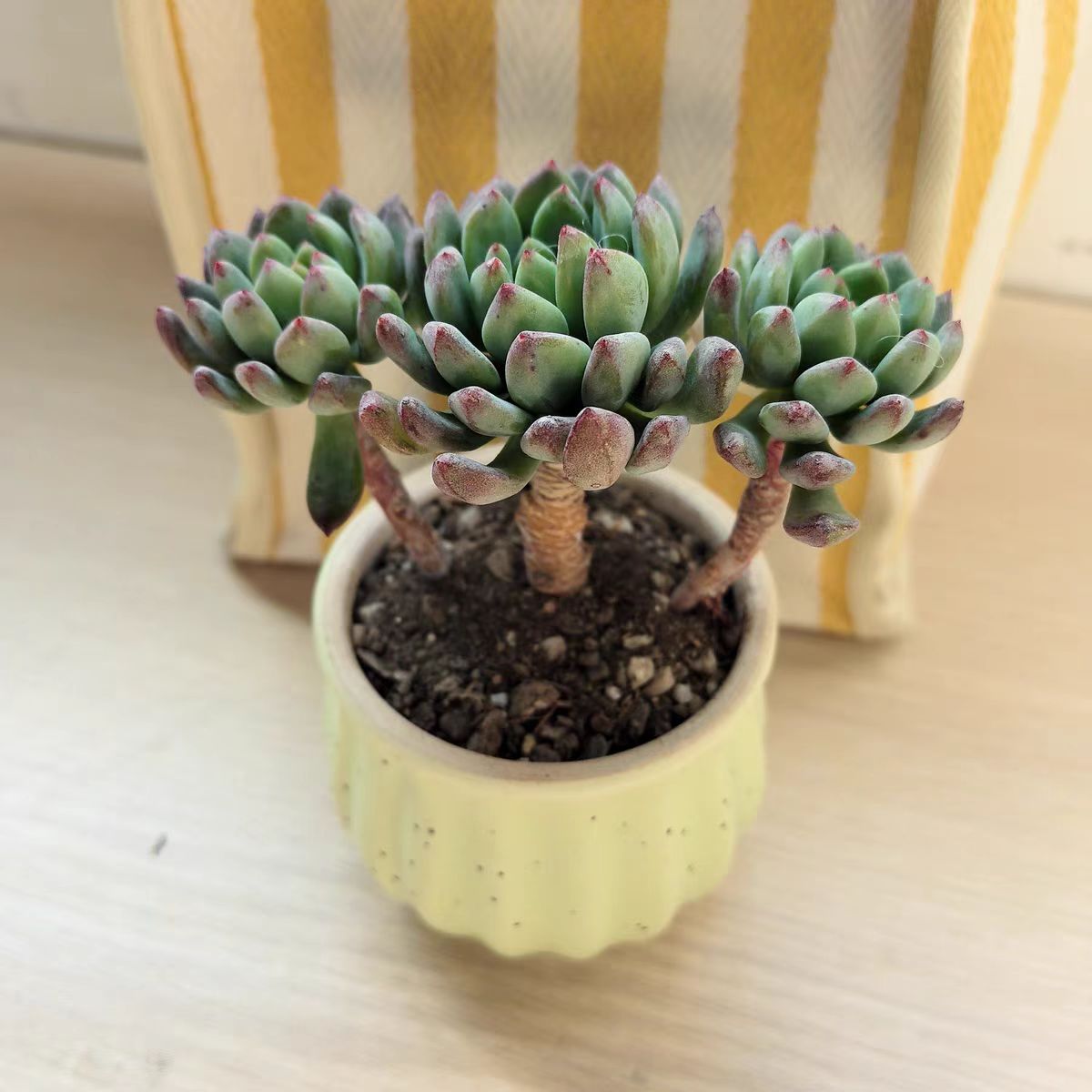Blooming in succulents is a natural phenomenon in their growth cycle, indicating that the plant has matured and entered the reproductive stage. From the perspective of plant growth patterns, blooming is for pollination and seed - setting, enabling the continuation of the species. This is an important way for succulents to reproduce.
The meaning of blooming varies among different succulent varieties. For some succulents, blooming signals the end of life. For example, species like Orostachys boehmeri, Sedum makinoi, and Greenovia dodrentalis belong to the "bloom - and - die" category. The mother plant will gradually wither after blooming and fruiting, but side buds or small seedlings will be left to continue growing. However, for most common succulent varieties, such as those in the Crassulaceae family (like the genus Echeveria and Sedum), blooming is just a normal growth stage and does not lead to the death of the plant. The plant can still continue to grow after blooming.
Are Succulent Blooms Good or Bad?
This needs to be judged according to specific circumstances. If it is a "bloom - and - die" succulent variety, blooming means that the mother plant is approaching the end of its life. Emotionally, it may be a bit regretful for the grower, but from the perspective of plant reproduction, this is a natural life cycle. Through blooming and seed - setting, the continuation of life is achieved, which can also be regarded as a kind of "rebirth". For common succulent varieties, blooming is a normal physiological phenomenon. Not only can we enjoy the unique flowers, but we can also obtain seeds through artificial pollination and experience the fun of seed - sowing and reproduction. In this case, blooming is a good thing. However, blooming in succulents consumes a large amount of nutrients in the plant. If the maintenance is improper, it may lead to problems such as shriveled leaves and slow growth, affecting its ornamental value.
Treatment Methods for Succulent Blooms
Treatment of "Bloom - and - Die" Varieties: If you are growing "bloom - and - die" succulent varieties such as Orostachys boehmeri and Sedum makinoi, there are two treatment methods to choose from. One is to keep the flower stalk and let it bloom and set seeds normally. During this process, provide the plant with sufficient light and appropriate moisture to ensure the smooth development and maturity of the seeds. After the seeds are mature and harvested, the mother plant will gradually wither. At this time, the withered mother plant can be cut off, and the side buds or small seedlings can be left for further cultivation. The other is to cut off the flower stalk as soon as it appears. This can avoid the plant from consuming too many nutrients, allowing the mother plant to continue growing and prolonging its life. It should be noted that when pruning the flower stalk, a sharp and disinfected pair of scissors should be used to avoid wound infection.
Treatment of Common Varieties: For succulent varieties that do not die after blooming, attention should be paid to nutrient supplementation during the blooming period. Some phosphorus - potassium fertilizers can be appropriately applied to the plant to promote the growth and development of the flowers and, at the same time, reduce the adverse effects on the plant caused by excessive nutrient consumption. When fertilizing, follow the principle of "applying thin fertilizers frequently" to avoid root burning caused by excessive fertilization.
If you do not plan to let the succulent set seeds, you can also cut off the flower stalk to save nutrients and allow the plant to recover growth more quickly. The time for pruning the flower stalk can be chosen when the flowers just open or in the early stage of flower stalk growth. The pruning method is the same as that for the "bloom - and - die" varieties. Pay attention to tool disinfection and wound treatment. If you want to enjoy the flowers, you can also keep the flower stalk, but closely observe the state of the plant. Once obvious shriveling and softening of the leaves occur, promptly supplement nutrients or cut off the flower stalk.
In addition, regardless of the variety of succulent, sufficient light should be ensured during the blooming period. Insufficient light can easily lead to poor flower growth and affect the ornamental value. At the same time, watering should be controlled to avoid excessive watering causing the plant to grow spindly or develop root rot.
In conclusion, blooming in succulents is a normal physiological phenomenon. As long as appropriate treatment methods are adopted according to different varieties and personal maintenance needs, succulent plants can grow healthily, and we can also enjoy the beautiful flowers or harvest the fun of reproduction.
What does it mean when a succulent blooms? Is it good or bad?

Share with
Tagged in :




Leave a Reply